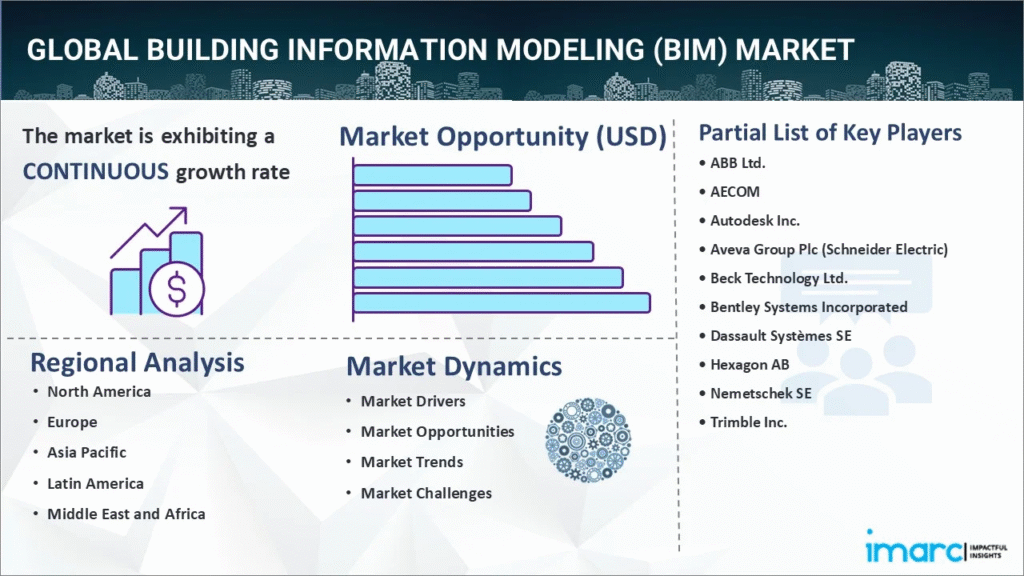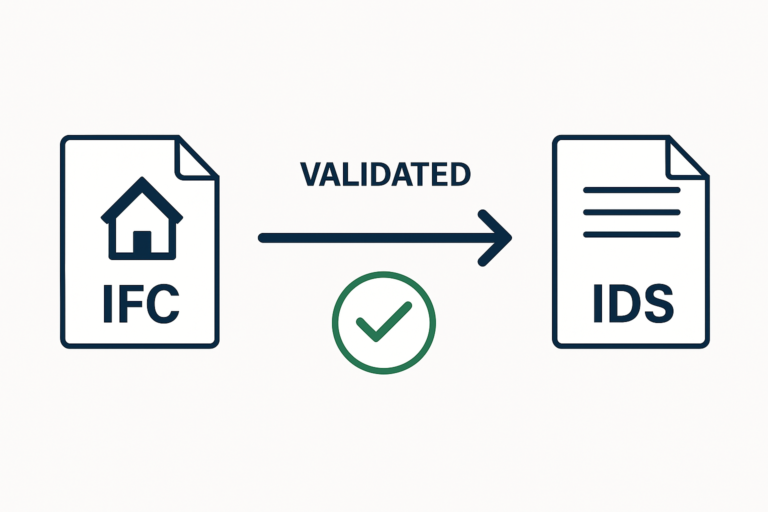📈 Global BIM Market to Reach $29.9 Billion by 2033
Date: 3 July 2025
Author: Souhayl OTHMAN – BIM Manager & Founder of BIM and Beam
The Building Information Modeling (BIM) revolution is gaining serious momentum. According to the latest report from IMARC Group, the global BIM market is on track to explode from $9.8 billion in 2024 to an estimated $29.9 billion by 2033. That’s a remarkable 13.2% CAGR over the next eight years — driven by a perfect storm of digitalization, sustainability goals, and the rise of smart technologies.

source : Building Information Modeling Market Size & Report | 2033
🚀 Why Is the BIM Market Booming?
The AEC industry is evolving rapidly, and BIM sits at the heart of that transformation. As governments, developers, and infrastructure providers demand better coordination, fewer errors, and more sustainable designs, BIM is no longer optional — it’s essential.
✅ Key Drivers of Growth
- Push for sustainability: BIM enables smarter material usage, carbon tracking, and energy optimization.
- Cost efficiency: 3D coordination reduces clashes and delays, driving ROI at every project stage.
- Tech integration: From IoT to cloud-based platforms, BIM now supports real-time insights and predictive analytics.

source : Building Information Modeling Market Size & Report | 2033
🏗️ BIM Is Becoming the Norm in Construction
By 2025, BIM will be a standard in large infrastructure and commercial projects. Its collaborative 3D environment streamlines workflows between architects, engineers, and contractors — reducing design conflicts, improving timelines, and enhancing transparency.
Government mandates in Europe and Asia are further accelerating BIM adoption, especially in public sector projects. Meanwhile, immersive tools like AR/VR are making it easier than ever to visualize and communicate complex models to clients and stakeholders.
🌐 Smart Infrastructure & IoT: BIM’s Next Frontier
One of the most exciting trends is the fusion of BIM with the Internet of Things (IoT). By integrating sensor data directly into BIM models, buildings can now be monitored in real time for occupancy, energy usage, and maintenance needs.
This shift positions BIM as a dynamic, living system — not just a design tool. It supports full lifecycle management from design to demolition, aligning with global goals for smart cities and resilient infrastructure.
🎓 The Talent Gap: BIM Skills Are in High Demand
The success of BIM adoption isn’t just about software — it’s about people. As BIM tools become more powerful, the industry faces a growing shortage of skilled professionals who can truly leverage their capabilities.
By 2025, the need for BIM-savvy engineers, architects, and construction managers will skyrocket. Companies and universities are already responding with:
- BIM certifications and diploma programs
- Hands-on training modules and workshops
- Internal upskilling programs focused on digital project delivery
💡 Want to future-proof your career? Learning BIM is no longer optional — it’s a strategic move.
📊 BIM Is Reshaping the Built Environment — Are You Ready?
With a $29.9 billion market opportunity ahead, BIM is redefining how we design, build, and manage infrastructure. From smart hospitals and airports to modular housing and digital twins, BIM is becoming the universal language of construction innovation.
At BIM and Beam, we’re excited to see this growth because it reinforces what we’ve always believed: BIM is the foundation of the future built environment.
🔗 Explore the Full Report
For data enthusiasts and strategists, the full IMARC report dives deep into segmentation by offering type (software, services), deployment models (cloud, on-premises), and end-users (AEC professionals, developers, and more).
Click here to request the full report sample from IMARC Group.
📬 Have thoughts on this trend? Share them in the comments or join me on LinkedIn to discuss how we can all thrive in the age of digital construction.
—
🖋️ Souhayl OTHMAN
Founder of BIM and Beam | BIM Manager | Revit & Digital Transformation Expert






